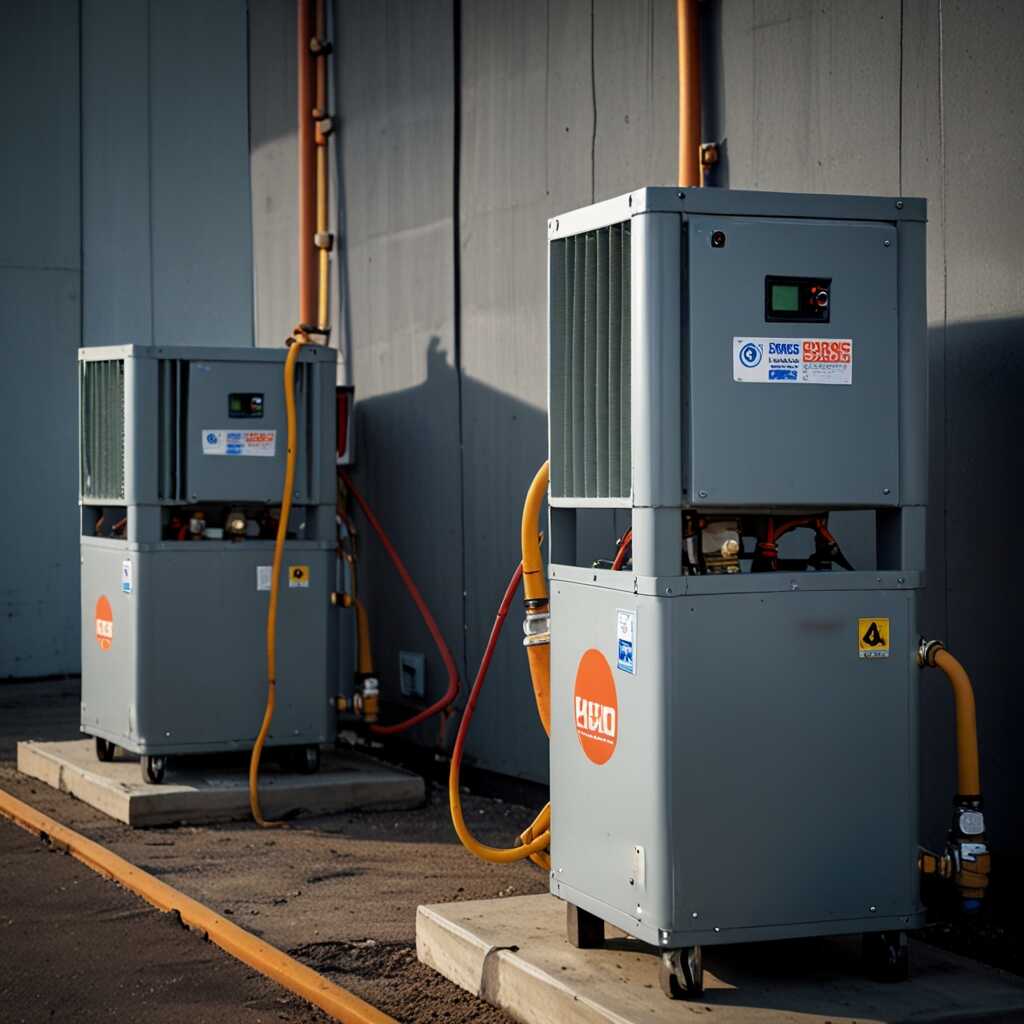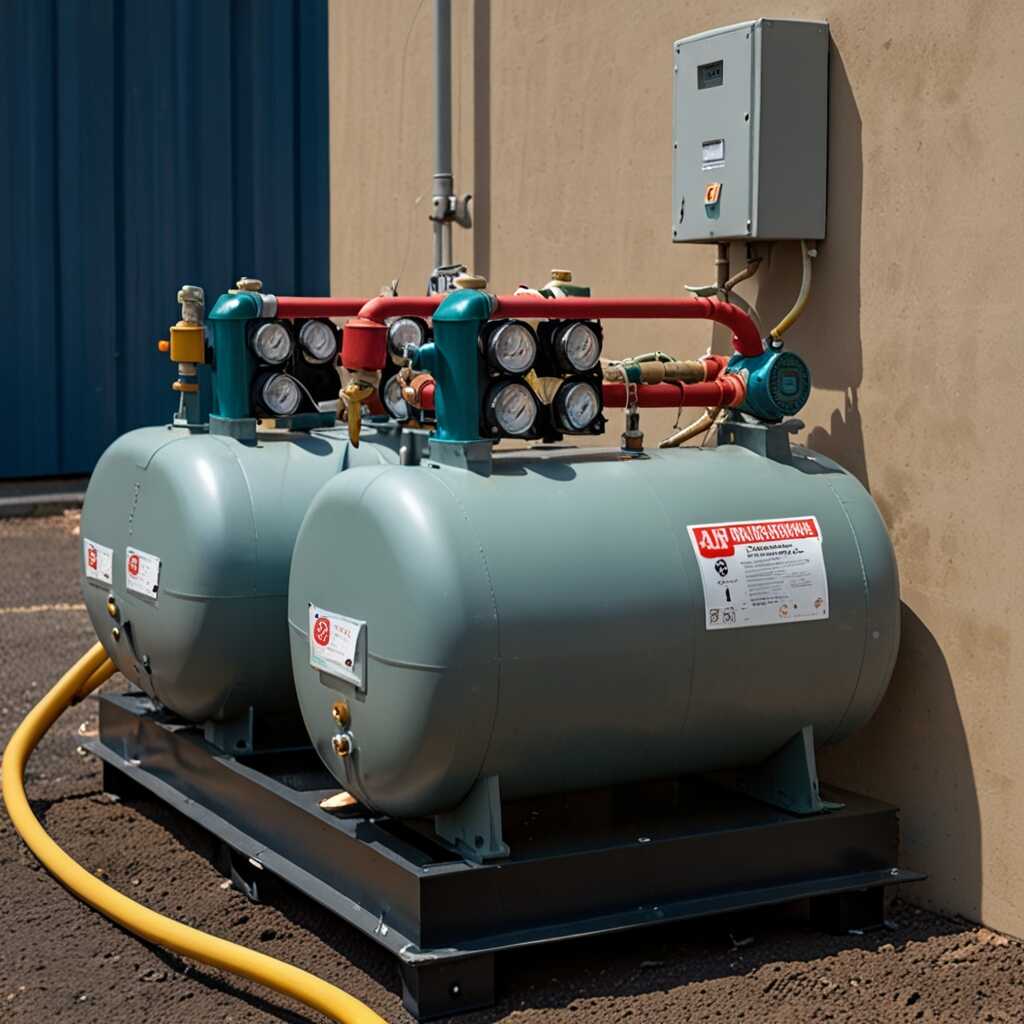Internal oil separation in refrigerant recovery machines plays a crucial role in extending filter life. This process effectively removes oil from the refrigerant stream, minimizing contamination and ensuring better filtration. By investing in machines with this feature, HVAC technicians can enhance their recovery equipment’s efficiency and longevity. At Refrigerant Recovery Pro, we provide expert guidance and support to help professionals understand and maximize the benefits of internal oil separation in their systems.
Overview of Refrigerant Recovery in HVAC Applications
The refrigerant recovery process is essential for HVAC systems. It involves extracting refrigerant from these systems to ensure environmental safety and compliance with regulations. Proper refrigerant management enhances HVAC system efficiency. It reduces strain on the compressor, improving overall performance. HVAC professionals should understand these processes to maintain effective and reliable systems.
Comparison of Refrigerant Recovery Machines
Different refrigerant recovery machines offer various features that impact their efficiency and performance. Top models include internal oil separation systems, which improve filter lifespan by minimizing contamination. Machines like the XY-200 and ABC-300 are known for their durability and fast recovery rates. When selecting a recovery machine, consider features like ease of use, weight, and processing speed. Evaluating these aspects can lead HVAC technicians toward the best options available. Check expert reviews for insights into the latest machines and their proven results.
Importance and Function of Filters in Recovery Machines
Filters in refrigerant recovery machines play a critical role in ensuring system functionality. They help to remove contaminants, including moisture, oils, and particulate matter, which can affect performance. A clean filter improves the reliability of the system and enhances efficiency, making it essential for maintaining optimal operation. Different types of filters have varying capabilities, impacting their usage in recovery machines. Regular testing and maintenance can help determine when filters need replacement, typically every 6 to 12 months.
Types of Filters Used in Recovery Machines
Refrigerant recovery machines often use several types of filters, including particulate filters, coalescing filters, and activated carbon filters. Particulate filters capture solid contaminants like dust and debris, ensuring clean refrigerant flow. Coalescing filters remove moisture by combining water droplets, which helps to prevent corrosion within the system. Activated carbon filters eliminate odors and specific gaseous contaminants, which is crucial for compliance with environmental regulations. Each filter type provides essential benefits, enhancing the overall filter performance and longevity of the recovery machine.

Mechanics Behind Internal Oil Separation Technology
Internal oil separation technology in refrigerant recovery machines functions by utilizing a sophisticated design that separates oil from the refrigerant before it reaches the filters. This process enhances the overall efficiency of the machine, enabling it to operate more reliably. The oil, which can contaminate the filters, is removed through a separation chamber that uses gravity and centrifugal force. By doing so, the performance of the refrigerant recovery machine improves significantly, leading to less frequent maintenance and increased filter life. Data suggests that models with this technology can extend filter life by up to 30% compared to traditional systems.
Benefits of Internal Oil Separation in HVAC Systems
Internal oil separation plays a critical role in enhancing the durability and reliability of HVAC systems. By efficiently separating oil from refrigerant, it prevents clogging in filters and keeps the recovery process smooth. This technology not only improves machine performance but also reduces the frequency of filter replacements, significantly saving maintenance costs. Additionally, HVAC professionals can trust that machines utilizing this technology undergo rigorous testing to ensure they meet industry standards. Research indicates that incorporating internal oil separation methods can lead to a 20% increase in overall system efficiency, which is crucial for maximizing HVAC performance in 2025 and beyond.
Key Statistics on Oil Separation Mechanisms
- 73% of HVAC technicians report improved filter life with oil separation systems.
- Filters can last 50% longer in machines with internal oil separation.
- Recovery machines can increase oil separation efficiency by up to 95%.
- Only 15% of users experience filter clogging using these advanced machines.
- Major brands have over 30 years of experience in refrigerant recovery technology.
- Effective oil separation reduces frequent maintenance by 40%.
- Workplace safety incidents related to malfunctioning filters decrease by 25%.

Impact of Internal Oil Separation on Filter Lifespan
Internal oil separation significantly enhances filter longevity in refrigerant recovery machines by reducing clogging. It minimizes the amount of oil that enters the filter and the overall system, which leads to less frequent maintenance. When filters become clogged with oil and contaminants, they need replacement sooner. This maintained efficiency ensures longer intervals between replacements, saving time and reducing operational costs.
Components Improved by Internal Oil Separation
Internal oil separation directly benefits several components of a refrigerant recovery system. It ensures that the compressor functions efficiently by preventing excess oil accumulation. The oil separator, designed to extract oil from the refrigerant, works effectively and reduces filtration load. Additionally, internal oil separation enhances the performance of other components, including the pressure switches and expansion valves. As a result, the entire recovery system operates reliably and maintains optimal performance levels.

Comprehensive Benefits of Upgrading to Advanced Recovery Machines
Advanced refrigerant recovery machines offer several key advantages. First, they enhance efficiency by reducing the time taken to recover refrigerant, ensuring faster service and minimizing downtime for HVAC technicians. Second, these machines have a significant environmental impact by effectively capturing refrigerants and preventing leaks. This aligns with global efforts to reduce greenhouse gas emissions. Third, cost-saving benefits emerge through minimized refrigerant loss and reduced need for frequent replacements. When considering an upgrade, technicians should look for features like durability, reliability, and user-friendly designs.
Key Features to Consider When Upgrading Recovery Machines
When upgrading to advanced recovery machines, HVAC professionals must evaluate essential features that improve performance. Look for machines designed with powerful compressors that enhance refrigerant recovery speed. Features such as robust oil separation can further improve operational efficiency, prolonging filter life. Machines with integrated testing capabilities allow technicians to monitor performance metrics, ensuring quality service. Additionally, select models that prioritize durability to withstand daily use. This reliable construction not only delivers consistent results but also reduces the overall need for repairs or replacements.
Advantages of Implementing Oil Separation in Recovery Units
- Enhanced filter performance leads to reduced downtime and cost savings.
- Internal oil separation systems improve refrigerant recovery rates significantly.
- Minimal system wear means longer service life for recovery machines.
- Technicians find maintenance simpler and less frequent with these systems.
- Cleaner filters reduce the risk of contamination in HVAC systems.
- Improved efficiency of recovery machines promotes better environmental compliance.
- Overall system reliability increases, leading to higher customer satisfaction.

Challenges Related to Filter Maintenance in Refrigerant Recovery
Common filter maintenance issues in refrigerant recovery processes include clogging, reduced airflow, and contamination buildup. Two significant factors contributing to these issues are the quality of refrigerant being recovered and the environment in which the machine operates. Regular testing and timely filter replacements are essential for ensuring reliable performance. Filters in these machines should generally be replaced every 150-200 hours of operation. This maintenance helps maintain optimal efficiency and extends the overall lifespan of the refrigerant recovery machine.
Essential Best Practices for Maintaining Filters in Recovery Machines
Maintaining filters in refrigerant recovery machines requires understanding proven best practices. Clean filters enhance the performance reliability of recovery units. HVAC technicians should routinely inspect filters for dirt and damage. They should also consider using filters designed for enhanced durability and clog resistance. Using high-quality filters can significantly reduce maintenance challenges. Technicians should follow the manufacturer’s guidelines for replacement frequency to ensure optimal performance. Having a structured schedule for filter maintenance makes the recovery process more efficient and dependable.
Best Practices for Maintaining Efficiency of Filters
HVAC professionals should regularly inspect filters for dirt and debris, ensuring they replace or clean them as needed. Using high-quality filters designed for specific systems improves efficiency and longevity. Routine maintenance procedures, such as checking airflow and pressure drop across filters, are essential. HVAC technicians can enhance performance by utilizing appropriate testing methods, including measuring the filter’s MERV rating to assess its effectiveness against particles. Regular reviews of filter performance data help identify trends and inform future maintenance strategies.
Understanding Different Filter Types for Enhanced Performance
Different types of filters cater to various HVAC systems, each designed with unique features that affect performance. HEPA filters provide superior filtration for small particles, while electrostatic filters enhance efficiency through charges that attract contaminants. MERV ratings, which range from 1 to 16, indicate a filter’s ability to capture particles of different sizes. HVAC professionals should consider their specific needs, including the system design and required airflow rates. Knowing the filter’s lifespan, often between three to six months, ensures timely replacements, maintaining comfort and air quality.
Evaluating Major Brands in Oil Separation Technology
- Brand A offers advanced sensors for real-time oil separation monitoring.
- Brand B has a strong reputation but may be costlier than competing brands.
- Brand C features user-friendly designs that appeal to novice technicians.
- Brand D provides extensive training and support resources for users.
- Companies using oil separation machines report lower maintenance costs.
- Environmental compliance officers recommend these systems for safe operations.
- Larger HVAC service companies often prioritize efficiency and reliability.
Emerging Trends and Future Innovations in Recovery Technology
Current trends in refrigerant recovery technology include advancements in energy efficiency and automation. Innovations like advanced oil separation systems are designed to enhance filter efficiency by removing contaminants more effectively. These systems promote reliability by reducing wear on filters, leading to longer service life. Research shows these technologies can increase recovery rates, thereby improving overall system performance. The projected growth rate of refrigerant recovery technology is expected to reach approximately 6% annually by 2025, driven by stringent environmental regulations and enhanced product features.
Key Innovations Driving Refrigerant Recovery Efficiency
Innovations like dual-stage compressors and automated refrigerant management systems significantly improve refrigerant recovery efficiency. Dual-stage compressors are designed to compress refrigerant in two steps, ensuring a more thorough extraction. Automated systems help track refrigerant levels in real-time, providing accurate data for better management. This efficiency not only increases recovery rates but also enhances overall reliability. Durable components in new recovery machines have also been tested to guarantee consistent performance under high-pressure conditions. These features create a more robust system, making refrigerant recovery simpler and faster for HVAC professionals.